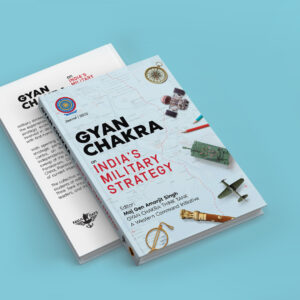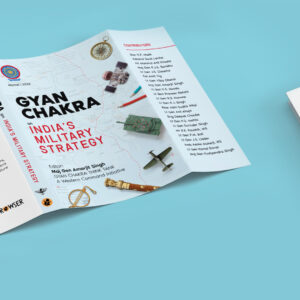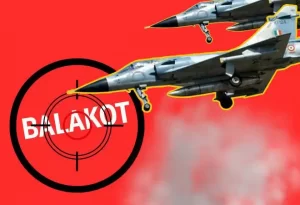Like the role of air power in the last century, the air strategy of the Indian Air Force (IAF) has evolved, reflecting changes in technology, doctrine, and strategic priorities. Some key milestones in the evolution of the air strategy of the IAF are:
Genesis & Early Years. The Indian Air Force was established in British India as an auxiliary air force of the Royal Air Force on 8 Oct 1932, with four Westland Wapiti biplanes and five Indian pilots. The then Royal IAF (RIAF) grew in size during World War II to eventually ten squadrons. In the early years of the IAF, the primary focus was on providing air support to British and Commonwealth ground forces. During World War II, the IAF played a significant role in the Burma campaign by halting the advance of the Japanese army, by providing air cover and support for ground troops. IAF evolved initially in a tactical role primarily to support surface and maritime wars.
Partition in 1947. Indian Air Force (IAF) of independent India came into being with seven squadrons (six fighter squadrons and one transport squadron). By then the IAF had a well-established professional ethos and a reputation to live up to.
The Indo-Pakistani War of 1947. Almost immediately after Independence, India, and Pakistan clashed over the future of Kashmir. On the first day itself on 27 October 1947, an infantry battalion was airlifted from Delhi to Srinagar. IAF thereafter carried out air operations (airlift of troops and supplies, photo-reconnaissance, bombing, strafing, and interdiction), in support of surface forces. The air power usage was tactical and reactionary to emerging situations.
Initial Growth. The decade of the 1950s saw the induction of aircraft and support systems, both in quantity and quality, into the IAF. During this period, the IAF acquired its first jet fighters and transport aircraft and India began to develop its own indigenous aircraft and weapons systems. IAF began to shift its focus to defending India’s borders and air space, and its capabilities started developing beyond the limited scope of the support role.
1962 war. The ground reality in 1962 was that IAF had relatively potent air power with Western aircraft vis-a-vis old Russian aircraft with China. Despite a clear combat edge, the fighter component of the air force was not used during the Sino-Indian conflict of 1962. There has been a general reluctance to use air power due to the perceived fear of escalation of conflict, which was evident even up to the 1999 Kargil conflict and has changed since the Balakot strike in 2019. However, post-war it was decided to build up the IAF strength to 45 squadrons.
The Indo-Pakistani War of 1965. In 1965, the IAF gave a good account in the skies and in support of ground operations. Air superiority in specific terms was not contested by either side. IAF provided close air support to help the Army stem Pak armoured thrusts. Eventually, the Pakistan offensive was stopped, and the war ceased. After the war, the IAF continued to acquire modern combat aircraft and had 39 combat aircraft squadrons by 1971. It also improved tactics and techniques based on the lessons of the 1965 war. IAF decided the war priorities in sequence to be air defence, support to surface forces, and offensive action to counter or neutralise or counter the enemy air.
The Indo-Pakistani War of 1971. In 1971 the IAF was in much better shape in qualitative and quantitative terms than the PAF. This was the first time the IAF actively engaged the enemy air force. IAF achieved complete air superiority over the eastern wing of Pakistan within a few days. Air operations included close air support and air cover to the Indian Army, independent raid missions against Pakistani Air Force bases, assistance to Indian Navy in maritime operations, offensive attacks on enemy armour, and strategic bombing. IAF played a pivotal role in the victory, leading to the liberation of Bangladesh, and it was probably the high point for the IAF. In this war, IAF carried out all air campaigns in parallel.
Modernization and Expansion (1980-2000): To retain relevance in the evolving operational environment with the induction of modern aircraft and systems in the immediate neighbourhood, in the 1980s and 1990s, the IAF modernised itself with advanced aircraft, weapons, and sensors, and expanded its capabilities to include strategic airlift.
Power Projection Abroad. During 1987-90 IAF was involved with operations in Sri Lanka and Maldives. IAF established an “air bridge” between mainland India and Sri Lanka for the Indian Peace Keeping Force (IPKF). Although combat aircraft were not used, IAF helicopters provided fire support for the army. In 1988, IAF undertook Operation Cactus, wherein, it flew at least a battalion of paratroopers, more than 1000 Miles away to Maldives when rebels attempted to overthrow the government. In these operations, the IAF demonstrated its ability to project forces on short notice.
Kargil Operations 1999. Kargil operations demonstrated once again the impact of air power in the achievement of objectives. The IAF flew hundreds of strike missions supported by combat patrols and escorts. Air power was employed in a very innovative way in high altitudes. The Kargil War forced the IAF to rethink aerial strategies as it attempted to orchestrate an aerial campaign at altitudes of 14,000 to 18,000 feet against well-camouflaged targets.
Balakot Strike. A game-changer shift took place on 26 February 2019, when India decided to use offensive air power by carrying out deep strikes against targets in Pakistan even beyond the Pakistan-occupied Kashmir (PoK). The myth about the use of air power being escalatory in nature was broken.
Strategic Transformation. Originally the IAF had formed purely for the requirements of the British interests of its Empire, its roles and responsibilities were limited to tactical applications of air power. Post-independence also the application of air power continued to remain tactical in nature. It was only in 1971 that the IAF carried out strategic effect-based operations with air campaigns in parallel. In the first decade of this century, IAF inducted airborne early warning, and aerial refuelling capability leading to an increase in strategic reach along with conventional deterrence. The transformation of the Indian Air Force from a tactical air power to a strategic one had begun, and subsequently, the pace picked up for it to become a broad-spectrum air force in future.
Suggestions and value additions are most welcome
For regular updates, please register here
Subscribe
References and credits
To all the online sites and channels.
Disclaimer:
Information and data included in the blog are for educational & non-commercial purposes only and have been carefully adapted, excerpted, or edited from sources deemed reliable and accurate. All copyrighted material belongs to respective owners and is provided only for purposes of wider dissemination.



